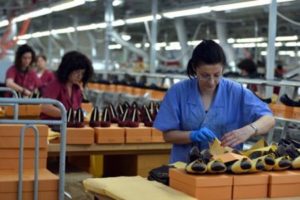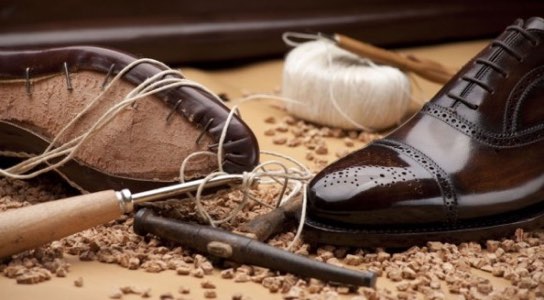
At the beginning of the second mandate of precidency at CEC- European Confederation of Footwwear, we interview Cleto Sagripanti to take stock of the successes, of the initiatives in the field and future projects for the European Footwear.
At the beginning of your second mandate, at what point is CEC?
The CEC continues consolidating its role in Brussels as the voice of the European footwear industry, and is regularly invited to have a say in all EU policies and initiatives that may have implications and/or provide opportunities to our footwear SMES. Our represenativeness will increase again in 2018 with a new Member in our Confederation, the Czech Footwear and Leather  Association, following the incorporation of the Hungarian Association in 2017.
Association, following the incorporation of the Hungarian Association in 2017.
An exemple of success on our advocacy work in Brussels was the selection of foowear together with textile, clothing and leather (TCLF) as one of the six sectors (the others were Aerospace, Automotive, Defence, Tourism and Maritime Technology) choosen by the European Commission for funding a four-year framework for strategic cooperation between key stakeholders with the aim to develop concrete actions to satisfy short and medium term skills in the sector. A project proposal submitted by CEC and other 20 partners of the TCLF sectors has been approved under this Blueprint for Sectoral Cooperation, and will start in January 2018. As you know, CEC has also obtained funding under another 11 European projects since 2013, but the peculiarity of the “Skills 4 Smart TCLF Industries 2030” project is that it intends to implement a short-medium term strategy on skills development to stimulate invesment and encourage the strategic use of EU and national funding opportunities in our sector. We intend to involve regional authorities from the start with the objective to place our sectors under their “smart specialisation strategies”: we need to keep our industry at the forefront and for that purpose our workers, the main asset of our industry, require the right skills to handle the rapid technological progress and master innovation.
- How do you comment on the new defense mechanism of European industry?
We have been working since December 2014 together with other EU industrial associations, on accelerating the modernisation of the EU Trade Defence Instruments, which 2013 Commission’s proposal was blocked at the EU Council.
We are therefore pleased with the recent agreement: the package comprises greater transparency, efforts at greater predictability of measures for traders and EU importers, and more leeway for the Commission to initiate ex-officio investigations. We just have some concerns about the strength of some of the new changes, as for instance we would prefer to have a public advance notice of two weeks on the implementation of provisional duties instead of three weeks proposed because of the risk of stockpiling and a surge of imports.
In any case, as representative of the EU footwear industry, we will monitor the implementation of the TDIs modernisation legislation, to make sure it will enable us to take appropriate measures against unfair trade practices if our sector suffers from dumping and subsidies.
- The EU has embarked on an acceleration in bilateral trade negotiations with Japan’s agreements and the reopening of negotiations with Mercosur. How do you comment this opening?
The negotiations with Japan were not easy for the EU footwear industry, because of the special treatment and protection that Japan still grants to people working with leather and footwear, but following many interventions at high level, we concluded a fair deal for European shoes.
Now our attention is focused on Mercosur, which has not started off on the right foot for our industry because Brazil does not seem to be willing to offer market access for leather shoes, and the result would be that our European shoes continue paying the 37% when exporting to Brazil. The CEC will continue participating close to the European Commission in the negotiations in January, in order that the right agreement for our leather shoes to access Mercosur market is reached, also in relation to the  future rules of origin.
future rules of origin.
- Re-shoring: is there a trend of returning productions in Europe? If so, can you explain how and in what countries?
It is difficult to give numbers related to new employment in Europe specifically originated on the reshoring of production to European countries. In any case, we believe that the trend will increase during the next years because of various factors such as consumers’demand for products personalisation and fast product delivery, a better control of the supply chain from the brands, etc.
- Generational Replacement and Training: the CEC has promoted several initiatives. Do you want to talk about it?
Indeed, the sector suffers from an ageing workforce, which is not being replaced because of lack of attractiveness to the new generations, and this is reinforced by Vocational Education Training being considered a second rank studies- path. There is a significant risk of losing the current skills and savoir-faire of the profession, and we encourage all industry stakeholders to join efforts to modify this pattern.
One of the initiatives on which CEC is working, together with Assocalzaturifici and the European Trade Unions, is the project “Attracting Skilled Workforce to the Footwear Sector” cofounded by the European Commission under the Social Dialogue at EU level.
We are currently elaborating a promotional campaign, which includes a website with interviews with young workers and a video, with the support of several footwear companies from Italy, Poland, Portugal and Spain. Between February and May 2018, we will also organise “Young  Workers Days” in IT, PL, PT and SP to present the different educational offers across Europe. Last but not least, we will soon also launch a European contest with two category concepts and prices: one for students of Secondary Schools and another for students of VET (Vocational educational and training) centres. We need to show to young generations that we are proud to belong to the “footwear community”, a part of the European creative industries and a representative of the European culture and heritage.
Workers Days” in IT, PL, PT and SP to present the different educational offers across Europe. Last but not least, we will soon also launch a European contest with two category concepts and prices: one for students of Secondary Schools and another for students of VET (Vocational educational and training) centres. We need to show to young generations that we are proud to belong to the “footwear community”, a part of the European creative industries and a representative of the European culture and heritage.
- World Footwear Congress: can you announce where and when it will take place ?
The CEC received a few candidatures to host the next World Footwear Congress, but we have still not decided when and where it will take place because different internal and external factors have emerged in the last two years. We are therefore still evaluating the best option. On the other hand, the worldwide footwear sector has already an appointment in May 2018, the UITIC Congress in Porto, which will provide an opportunity for footwear stakeholders to meet and exchange some of the upcoming changes related to the latest technologies.
- Secoo deal for European luxury companies: what does it envision and what are its objectives?
I am of the opinion that nowdays, a successful business strategy should include at least one and even two of the following parameters: “online sales” and “China as a market”, and SECOO offers both. As we know, European high-end and luxury shoes are well renown around the world, and online sales represent an unquestionable opportunity for European SMEs. Moreover, China continues being the largest consumer market in the world, and this fact will not do but to increase through the years, and so will do the GDP per capita.
The agreement reached between SECOO and CEC will provide for the right secure business environment and for the necessary assistance that our SMEs need to penetrate the online Chinese market .



